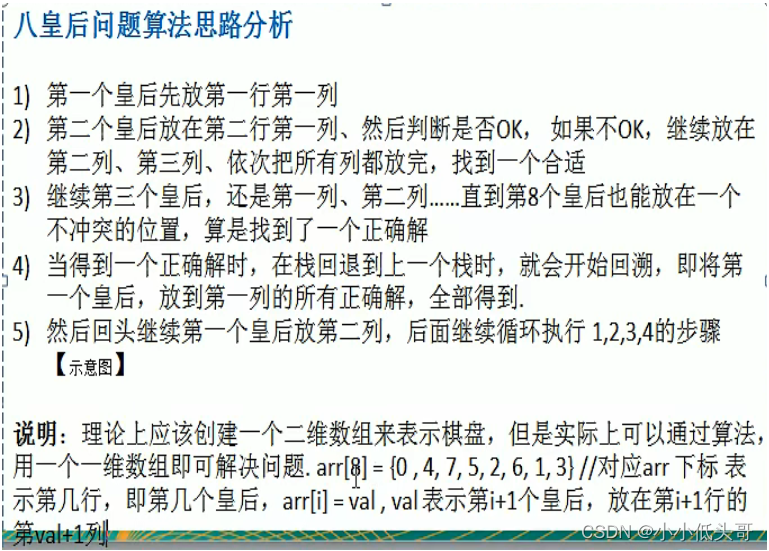FFmpeg实现了一个AVBufferPool ,这个pool可以用来提前做些内存分配等,在ffmpeg cuvid插件中hwcontext_cuda.c文件夹中可以看到这个Pool的用法。
下面是关键结构体的定义,可以看到几个比较重要的函数指针,比如:
void (*free)(void *opaque, uint8_t *data);
这个是用来释放AVBuffer 中的data数据的,可以由用户来指定。
/**
* The buffer was av_realloc()ed, so it is reallocatable.
*/
#define BUFFER_FLAG_REALLOCATABLE (1 << 0)
struct AVBuffer {
uint8_t *data; /**< data described by this buffer */
buffer_size_t size; /**< size of data in bytes */
/**
* number of existing AVBufferRef instances referring to this buffer
*/
atomic_uint refcount;
/**
* a callback for freeing the data
*/
void (*free)(void *opaque, uint8_t *data);
/**
* an opaque pointer, to be used by the freeing callback
*/
void *opaque;
/**
* A combination of AV_BUFFER_FLAG_*
*/
int flags;
/**
* A combination of BUFFER_FLAG_*
*/
int flags_internal;
};
下面是Pool的元素,BufferPoolEntry,可以看到一个next指针,其实就是一个单向链表。
其中free用来释放buffer
typedef struct BufferPoolEntry {
uint8_t *data;
/*
* Backups of the original opaque/free of the AVBuffer corresponding to
* data. They will be used to free the buffer when the pool is freed.
*/
void *opaque;
void (*free)(void *opaque, uint8_t *data);
AVBufferPool *pool;
struct BufferPoolEntry *next;
} BufferPoolEntry;
下面是一个bufferPoll的定义,其中有一个refcount,作为ref来使用,另外有两个alloc函数和pool_free
struct AVBufferPool {
AVMutex mutex;
BufferPoolEntry *pool;
/*
* This is used to track when the pool is to be freed.
* The pointer to the pool itself held by the caller is considered to
* be one reference. Each buffer requested by the caller increases refcount
* by one, returning the buffer to the pool decreases it by one.
* refcount reaches zero when the buffer has been uninited AND all the
* buffers have been released, then it's safe to free the pool and all
* the buffers in it.
*/
atomic_uint refcount;
buffer_size_t size;
void *opaque;
AVBufferRef* (*alloc)(buffer_size_t size);
AVBufferRef* (*alloc2)(void *opaque, buffer_size_t size);
void (*pool_free)(void *opaque);
};
下面的注释,其实已经说明了该怎么去使用buffer poll。
/**
* @defgroup lavu_bufferpool AVBufferPool
* @ingroup lavu_data
*
* @{
* AVBufferPool is an API for a lock-free thread-safe pool of AVBuffers.
*
* Frequently allocating and freeing large buffers may be slow. AVBufferPool is
* meant to solve this in cases when the caller needs a set of buffers of the
* same size (the most obvious use case being buffers for raw video or audio
* frames).
*
* At the beginning, the user must call av_buffer_pool_init() to create the
* buffer pool. Then whenever a buffer is needed, call av_buffer_pool_get() to
* get a reference to a new buffer, similar to av_buffer_alloc(). This new
* reference works in all aspects the same way as the one created by
* av_buffer_alloc(). However, when the last reference to this buffer is
* unreferenced, it is returned to the pool instead of being freed and will be
* reused for subsequent av_buffer_pool_get() calls.
*
* When the caller is done with the pool and no longer needs to allocate any new
* buffers, av_buffer_pool_uninit() must be called to mark the pool as freeable.
* Once all the buffers are released, it will automatically be freed.
*
* Allocating and releasing buffers with this API is thread-safe as long as
* either the default alloc callback is used, or the user-supplied one is
* thread-safe.
*/
/**
* The buffer pool. This structure is opaque and not meant to be accessed
* directly. It is allocated with av_buffer_pool_init() and freed with
* av_buffer_pool_uninit().
*/
typedef struct AVBufferPool AVBufferPool;
/**
* Allocate and initialize a buffer pool.
*
* @param size size of each buffer in this pool
* @param alloc a function that will be used to allocate new buffers when the
* pool is empty. May be NULL, then the default allocator will be used
* (av_buffer_alloc()).
* @return newly created buffer pool on success, NULL on error.
*/
#if FF_API_BUFFER_SIZE_T
AVBufferPool *av_buffer_pool_init(int size, AVBufferRef* (*alloc)(int size));
#else
AVBufferPool *av_buffer_pool_init(size_t size, AVBufferRef* (*alloc)(size_t size));
#endif
/**
* Allocate and initialize a buffer pool with a more complex allocator.
*
* @param size size of each buffer in this pool
* @param opaque arbitrary user data used by the allocator
* @param alloc a function that will be used to allocate new buffers when the
* pool is empty. May be NULL, then the default allocator will be
* used (av_buffer_alloc()).
* @param pool_free a function that will be called immediately before the pool
* is freed. I.e. after av_buffer_pool_uninit() is called
* by the caller and all the frames are returned to the pool
* and freed. It is intended to uninitialize the user opaque
* data. May be NULL.
* @return newly created buffer pool on success, NULL on error.
*/
#if FF_API_BUFFER_SIZE_T
AVBufferPool *av_buffer_pool_init2(int size, void *opaque,
AVBufferRef* (*alloc)(void *opaque, int size),
#else
AVBufferPool *av_buffer_pool_init2(size_t size, void *opaque,
AVBufferRef* (*alloc)(void *opaque, size_t size),
#endif
void (*pool_free)(void *opaque));
/**
* Mark the pool as being available for freeing. It will actually be freed only
* once all the allocated buffers associated with the pool are released. Thus it
* is safe to call this function while some of the allocated buffers are still
* in use.
*
* @param pool pointer to the pool to be freed. It will be set to NULL.
*/
void av_buffer_pool_uninit(AVBufferPool **pool);
/**
* Allocate a new AVBuffer, reusing an old buffer from the pool when available.
* This function may be called simultaneously from multiple threads.
*
* @return a reference to the new buffer on success, NULL on error.
*/
AVBufferRef *av_buffer_pool_get(AVBufferPool *pool);
/**
* Query the original opaque parameter of an allocated buffer in the pool.
*
* @param ref a buffer reference to a buffer returned by av_buffer_pool_get.
* @return the opaque parameter set by the buffer allocator function of the
* buffer pool.
*
* @note the opaque parameter of ref is used by the buffer pool implementation,
* therefore you have to use this function to access the original opaque
* parameter of an allocated buffer.
*/
void *av_buffer_pool_buffer_get_opaque(AVBufferRef *ref);
使用的流程就是上面几个函数。
文章开头也说了,hwcontext_cuda.c中使用AVBufferPool,其实是AVHWFramesContext 里面有一个bufferpool.它的使用。






